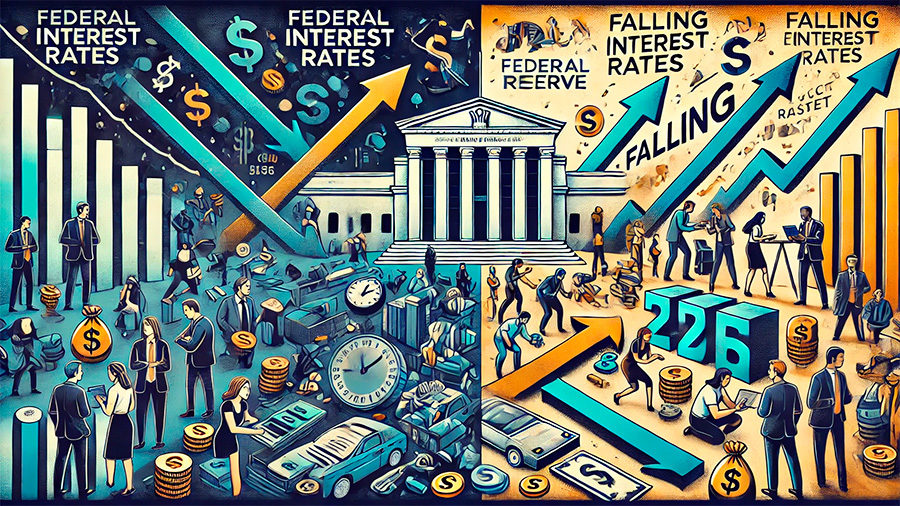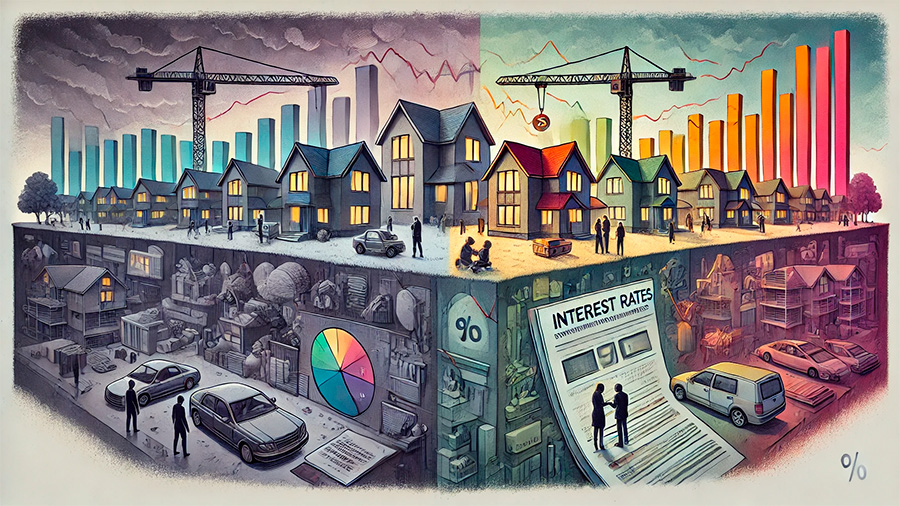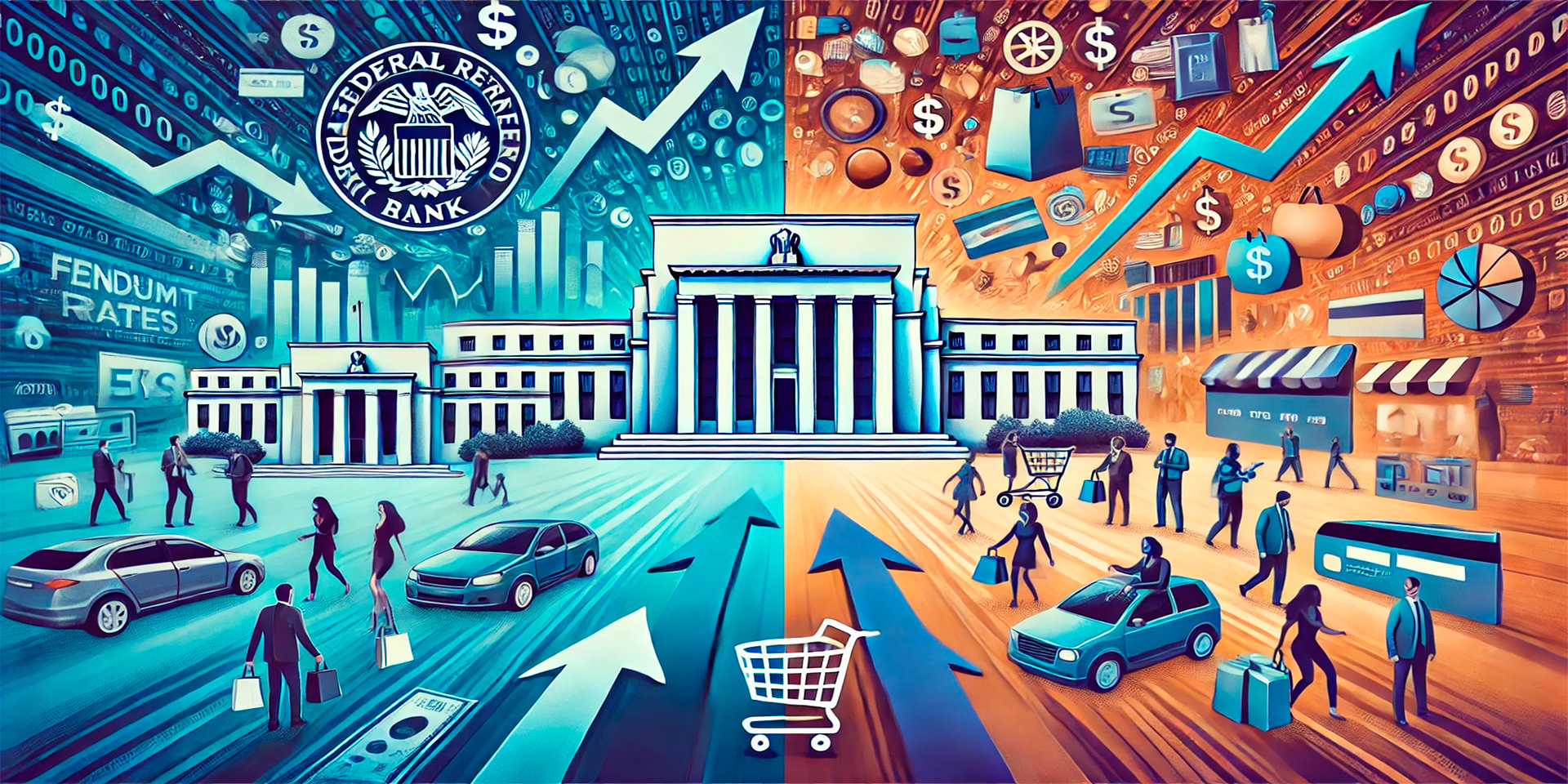The Federal Reserve (Fed) plays a crucial role in influencing economic activity through its control of interest rates. Changes in these rates directly affect how consumers feel about borrowing, saving, and spending. When the Fed adjusts interest rates, it impacts everything from mortgage rates and credit card interest to loan terms and savings account yields. These adjustments have a powerful influence on consumer confidence and spending behavior, which in turn affects the broader economy. In this article, we will explore how the Fed’s decisions on interest rates affect consumer behavior, borrowing patterns, and overall economic growth.
How the Federal Reserve Uses Interest Rates
The Federal Reserve adjusts the federal funds rate to either stimulate or slow down the economy. The federal funds rate is the interest rate at which banks lend to one another, but it also serves as a benchmark for other interest rates across the economy. When the Fed lowers the rate, borrowing becomes cheaper for consumers and businesses, encouraging spending and investment. Conversely, when the Fed raises the rate, borrowing becomes more expensive, which can cool down an overheated economy.
By adjusting the federal funds rate, the Fed can either promote economic growth or curb inflation. In periods of economic downturn, the Fed typically lowers interest rates to make credit more accessible, encouraging consumers to borrow and spend. When inflation becomes a concern, the Fed raises rates to reduce spending and borrowing, helping to prevent the economy from overheating.
Lowering Interest Rates to Stimulate Spending
When the Fed lowers interest rates, the immediate goal is to make borrowing cheaper, which encourages consumers to take out loans and finance major purchases. Lower interest rates reduce the cost of mortgages, car loans, and credit cards, making it more affordable for consumers to borrow money. This increased borrowing power tends to boost consumer spending, as people feel more confident in their ability to finance big-ticket items and manage their debt.
For example, lower mortgage rates can spur activity in the housing market by making it easier for first-time homebuyers to afford a home. Lower rates on auto loans can drive car sales, while reduced interest on credit card debt gives consumers more flexibility in their spending. These factors combined lead to a general increase in economic activity as consumers buy homes, cars, and other goods, fueling demand in multiple sectors.
Raising Interest Rates to Cool Down the Economy
When the economy shows signs of overheating, with rising inflation or speculative bubbles, the Fed raises interest rates to temper consumer spending and borrowing. Higher interest rates make loans more expensive, which discourages borrowing and encourages saving. As borrowing becomes less attractive, consumers tend to pull back on large purchases and reduce spending, leading to a cooling effect on the economy.
For example, when mortgage rates rise, homebuyers face higher monthly payments, which can push many potential buyers out of the market. Similarly, higher rates on auto loans or credit cards make financing more costly, leading to reduced demand for cars and consumer goods. By making borrowing more expensive, the Fed effectively slows down economic activity, helping to curb inflation and prevent unsustainable growth.

How Fed Rate Changes Affect Consumer Confidence
Consumer confidence is a measure of how optimistic or pessimistic individuals feel about their financial situation and the broader economy. Fed rate changes directly influence consumer confidence by affecting the cost of borrowing and the returns on savings. When the Fed adjusts rates, it sends signals to consumers about the state of the economy and the Fed’s outlook on future growth or inflation.
Low Rates and Boosted Confidence
When the Fed lowers interest rates, consumers generally feel more optimistic about their financial prospects. Lower borrowing costs make it easier to manage existing debt and finance new purchases, leading to increased confidence in personal finances. Consumers may also feel more comfortable spending money when they believe the economy is on solid footing and that the Fed is taking steps to stimulate growth.
For instance, lower rates on mortgages can encourage consumers to buy homes, which boosts confidence in their financial future. Lower credit card interest rates also give consumers more spending power, allowing them to make discretionary purchases without worrying about accumulating excessive debt. As a result, consumer confidence tends to rise when the Fed lowers rates, contributing to an overall increase in spending.
High Rates and Consumer Caution
On the other hand, when the Fed raises interest rates, consumers often become more cautious with their spending. Higher borrowing costs make it more expensive to take out loans or carry credit card debt, leading consumers to focus more on saving and less on spending. Additionally, higher interest rates signal that the Fed is trying to slow down the economy, which can cause consumers to feel uncertain about future financial conditions.
In times of rising rates, consumers may delay large purchases, such as homes or cars, due to the increased cost of financing. They may also prioritize paying down existing debt over spending on new goods and services. This more cautious approach to spending is reflected in lower consumer confidence, as individuals worry about the higher costs associated with borrowing and the potential for slower economic growth.
Impact on Consumer Borrowing and Spending
Changes in the Fed’s interest rate policy have a direct impact on consumer borrowing patterns, which in turn influence overall spending behavior. Whether consumers feel confident or cautious, interest rates shape their financial decisions on everything from home purchases to everyday expenditures.
Lower Rates Encourage Borrowing
When interest rates are low, consumers are more likely to take advantage of affordable loans for major purchases. Lower mortgage rates, for example, allow buyers to afford more expensive homes, while lower auto loan rates encourage more people to purchase new vehicles. Credit card rates also tend to fall in a low-rate environment, giving consumers more room to spend on discretionary items like travel, entertainment, and dining.
The availability of cheap credit often leads to a surge in consumer spending, which helps stimulate the economy. With more disposable income and access to affordable financing, consumers are more willing to invest in big-ticket items, such as home renovations, new appliances, or vacations. This increased spending generates demand across various sectors, leading to greater economic growth.
Higher Rates Discourage Borrowing
In contrast, higher interest rates make borrowing more expensive, leading consumers to rein in their spending. As the cost of mortgages, auto loans, and credit card debt rises, consumers become more focused on reducing their financial obligations rather than taking on new debt. Higher borrowing costs can lead to fewer home sales, reduced car purchases, and lower credit card usage, all of which contribute to slower economic growth.
Consumers facing higher interest rates often prioritize paying off existing debt over making new purchases. For example, rising mortgage rates can deter potential homebuyers from entering the market, while higher credit card rates can encourage consumers to focus on paying down balances instead of using credit for new purchases. This reduction in borrowing and spending helps cool down the economy, especially when inflation is a concern.

Interest Rates and the Housing Market
One of the most significant areas where Fed rate changes are felt is the housing market. Mortgage rates, which are influenced by the Fed’s rate decisions, play a major role in determining whether consumers can afford to buy homes. Changes in mortgage rates directly affect monthly payments, making housing either more or less accessible to buyers.
Low Rates Stimulate Housing Demand
When the Fed lowers interest rates, mortgage rates typically follow suit, making home loans more affordable. Lower rates reduce monthly mortgage payments, allowing more consumers to enter the housing market. This increased demand for homes leads to higher home sales, benefiting not only the real estate sector but also related industries such as construction, home furnishings, and home improvement.
For many first-time homebuyers, lower mortgage rates provide the opportunity to purchase a home that would otherwise be out of reach. As more people buy homes, the demand for housing increases, which can lead to rising home prices in competitive markets.
High Rates Slow Down the Housing Market
Conversely, when the Fed raises interest rates, mortgage rates increase, making it more expensive for consumers to finance home purchases. Higher rates result in higher monthly payments, which can deter potential buyers and reduce demand for homes. As fewer people are able to afford homes, the housing market slows down, leading to fewer sales and potentially lower home prices in some areas.
For homeowners with adjustable-rate mortgages, rising rates can also lead to higher monthly payments, putting additional pressure on household budgets. In such cases, consumers may cut back on other forms of spending to keep up with their mortgage payments, further contributing to a slowdown in economic activity.
Conclusion: The Broader Economic Impact of Fed Rate Changes
The Federal Reserve’s decisions to raise or lower interest rates have far-reaching effects on consumer confidence and spending behavior. Lower rates generally encourage borrowing and spending, boosting economic growth by increasing demand for homes, cars, and consumer goods. On the other hand, higher rates tend to cool down spending and borrowing, helping to control inflation and prevent the economy from overheating.
For consumers, understanding how interest rate changes affect their financial decisions can help them navigate periods of economic uncertainty. By staying informed about the Fed’s actions, individuals can make more strategic choices about when to borrow, spend, or save, ensuring they maintain financial stability in both low- and high-rate environments.

